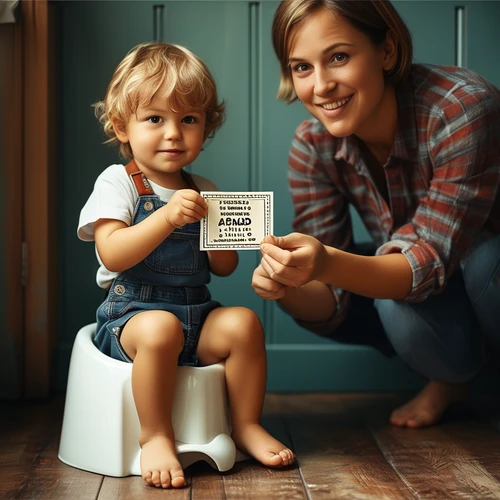The journey of potty training is a significant milestone in a child's development, marking their transition from infancy to more independent toddlerhood. This process can often be challenging and requires patience, consistency, and understanding.When to Start?
Determining the ideal time to begin potty training varies among children. On average, most children show readiness around 18-24 months but may not be fully trained until 3-4 years of age. Some signs that a child might be ready include staying dry for two or more hours at a time, expressing interest in the bathroom habits of others, telling you when they are about to go, and showing discomfort with soiled diapers.Preparation Tips
1. Choosing the Right Toilet Seat: Investing in a child-friendly toilet seat that attaches securely to your regular toilet can make the process less intimidating for young children. 2. Selecting Comfortable Clothing: Opt for easy-to.remove clothing like elastic-waist pants and avoiding overalls or tight one-piece outfits to help them undress quickly when nature calls.The Potty Training Process
The actual training can be broken down into several stages. Initially, let your child sit on the potty fully clothed to get used to the sensation. Gradually move towards letting them practice sitting there without a diaper. Start by attempting to toilet without using any training aids, then gradually introduce rewards or positive reinforcement for successful attempts.Handling Setbacks
Potty training isn't always linear and setbacks are common. Regresion may occur due to stress, changes in routine (like a new sibling), travel, illness, or even simple overstimulation. If regression happens, don't despair; it is quite normal. Just take a step back, review your approach, and be prepared for some time.Tips for Successful Potty Training
1. Maintain Consistency: As children thrive on routine, consistency is key. 2. Positive Reinforcement: Praise them for successful attempts to motivate them further. 3. Stay Calm and Patient: Remember, potty training can be stressful but maintaining a calm demeanor helps. 4. Consider Nighttime Training Separately: Many children master daytime control before nighttime.Advanced Tips
1. Use Visual Aid: Create a fun poster or chart with stickers to mark successful attempts. 2. Model Good Behavior: Children often mimic; demonstrate that using the potty is normal behavior. 3. Stay Consistent in Language: Use consistent terms for body functions (like pee and poo) and toilet actions.Concluding Thoughts
Potty training is a crucial yet challenging phase both for parents and children. While it may test your patience, it's equally rewarding when mastered. Just remember to adopt an encouraging approach, stay positive, and reward progress.


